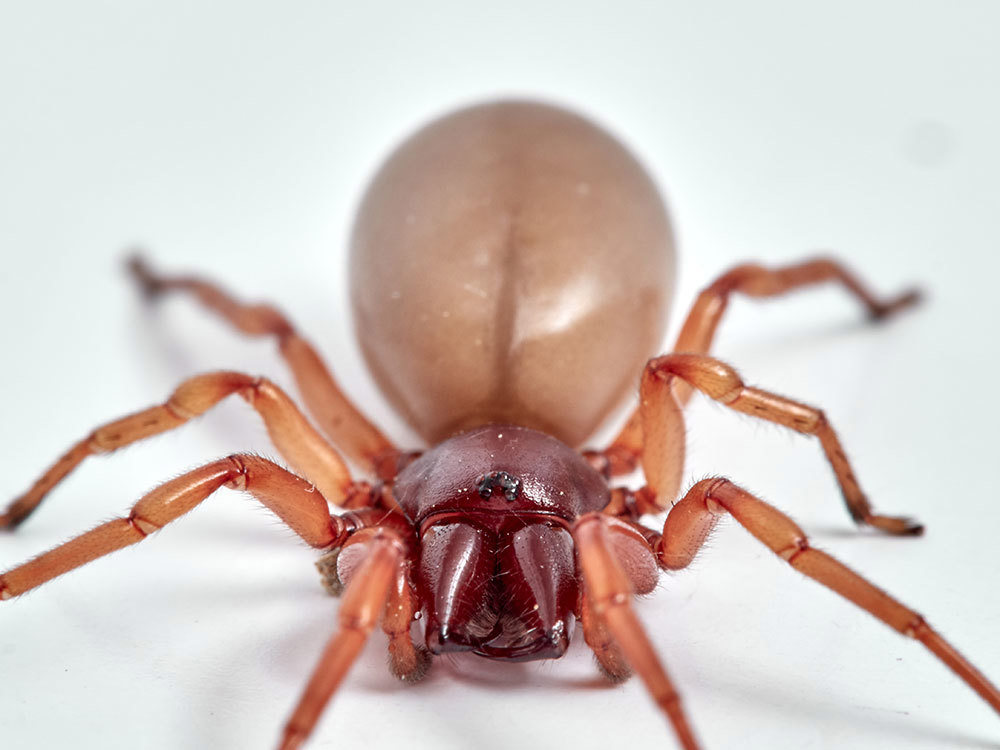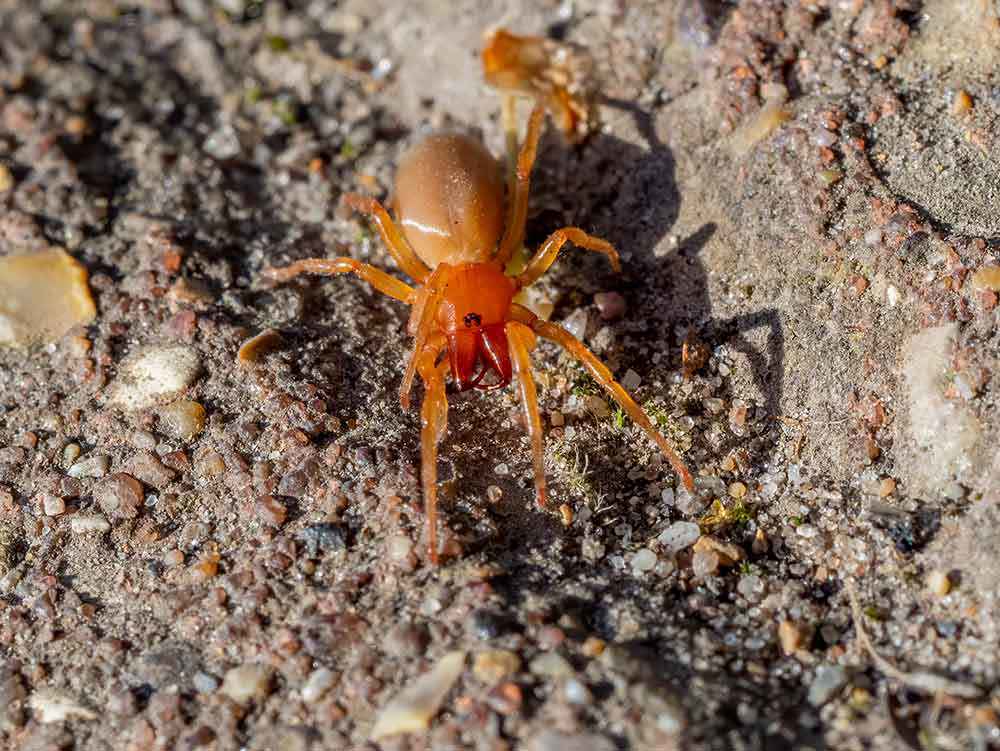Woodlouse Spider Dolomedes

Identification
Color: Dark red or orange body
Size: 1/3” (male); 1/2” (female)
Legs: 8
Antennae: No
Shape: Oval with large fangs
Region: Found throughout the U.S.
What is a Woodlouse Spider?
The woodlouse spider, sometimes referred to as “woodlouse hunter spider,” gets its name after its prey, woodlice. Woodlice are commonly known by a number of different names including: Roly-Poly, Sowbug, Pillbug, and more. The woodlouse spider is commonly found in most of North America and is often encountered in the late fall through early spring months.

What do woodlouse spiders look like?
This species usually has a oval-shaped, dark red or orange body with large fangs.
Upon a first glance, woodlouse hunter spiders may look threatening with six eyes and prominent fangs; however, this species is much less threatening to humans than other venomous spiders.
Woodlouse spiders have a dark red or orange body, which sets them apart from other common spiders known for their dark brown or black bodies. Adult woodlouse spiders can vary in size, ranging from a half-inch for females and over one-third inch for males.
It’s more than likely that you’ll spot woodlouse spiders underneath wood and clutter, rather than a typical spider web due to their preference to prey on woodlice, which often live in warm areas with damp, rotting wood. That being said, don’t be surprised if you encounter a woodlouse spider in your home. This spider, similar to other species, tends to find its way indoors, particularly in basements and underneath floorboards.
Much like their spider counterparts, the black widow and brown recluse, woodlouse spiders can use their sharp mouthparts to bite human skin if disturbed, which can cause irritation to the skin’s surface. While they’re not poisonous, woodlouse hunter spiders can leave a painful bite, which may result in itching sensations for up to two hours.
Common signs of a woodlouse spider infestation include seeing the spider itself along with their tent-like webs they weave to rest in during the day.
Although they’re not a threat to human health, woodlouse spider infestations can be a nuisance. If you suspect an infestation, contact a licensed pest control professional for help. You can find one with the helpful zip code search below.
Woodlouse and brown recluse spiders have similar shaped bodies, making it difficult for an untrained eye to differentiate between the two. Their abdomens are both cream in color, but woodlouse spiders’ legs are more orange instead of brown and they have a reddish head. They are also missing the telltale violin mark on its back that a brown recluse spider will have. Another difference between a woodlouse spider and brown recluse spider is that woodlouse spiders are larger in size. The woodlouse spider may bite humans if provoked, but their bite is not considered medically important. Brown recluse spiders on the other hand, are medically relevant due to their tissue-destroying venomous bite.
